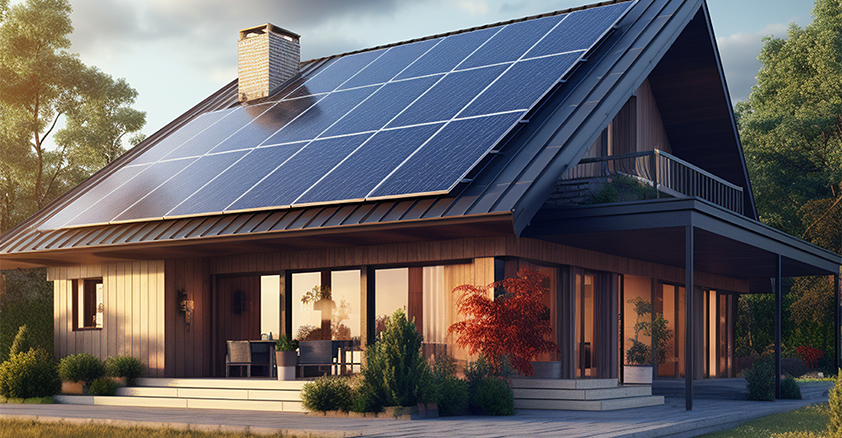
Solar energy has transformed the way we think about electricity generation, bringing clean and renewable power right to our rooftops. This transition is driven by advancements in solar technology and the increasing affordability of solar systems for both residential and commercial use. In this blog, we'll explore the journey of solar energy—from capturing sunlight to converting it into usable power for your home. We'll also discuss the differences between on-grid and off-grid solar systems and how to choose the best solution based on your needs and budget.
At its core, solar power is the process of converting sunlight into electricity using solar panels. These panels are made up of photovoltaic (PV) cells that absorb sunlight and convert it into direct current (DC) electricity. Since most household appliances run on alternating current (AC), the DC electricity from the panels is then passed through an inverter, which converts it into AC power that you can use in your home. This simple yet powerful process is the foundation of both on-grid and off-grid solar systems.
An on-grid solar system is the most common type of solar power setup, directly connected to the public electricity grid. This system allows you to use solar power during the day while seamlessly drawing electricity from the grid when your panels aren’t generating enough energy, such as during the night or cloudy days. One of the most significant advantages of an on-grid solar system is its cost-effectiveness and the ability to sell excess power back to the grid, a concept known as net metering.
Benefits of On-Grid Solar SystemsThe on-grid solar system price in India varies depending on the size of the installation and the quality of the components. On average, the cost ranges from INR 50,000 to INR 75,000 per kW. This price includes the solar panels, inverter, mounting structure, and installation charges. Despite the initial investment, on-grid systems tend to pay for themselves in a few years due to savings on electricity bills and income from net metering.
Unlike on-grid systems, an off-grid solar system operates independently from the public grid. This system relies on batteries to store the excess power generated during the day, which can be used during the night or on cloudy days. Off-grid solar systems are ideal for remote locations where access to the power grid is limited or unavailable.
Benefits of Off-Grid Solar SystemsThe off-grid solar system price tends to be higher than on-grid systems due to the need for battery storage. The cost can range from INR 1,00,000 to INR 1,50,000 per kW, depending on the battery capacity and the size of the solar power plant. Though the initial investment is higher, off-grid systems offer long-term savings by eliminating the dependency on external power sources.
Choosing between an on-grid and off-grid solar system depends on your specific energy needs, budget, and location. Here's a quick comparison to help you decide:
Both on-grid solar power plants and off-grid solar power plants are pivotal in reshaping the energy landscape in India. On-grid plants contribute to the national power grid, reducing the need for fossil-fuel-based energy sources, while off-grid plants provide reliable energy solutions to underserved regions. These solar power plants are crucial in India's journey toward achieving sustainable and clean energy for all.
Regardless of whether you choose an on-grid or off-grid system, regular maintenance of your solar panels is essential to ensure their efficiency and longevity. Dust, debris, and other environmental factors can reduce the panels' ability to absorb sunlight. Leading solar companies offer comprehensive maintenance services to keep your solar panels operating at peak performance.



